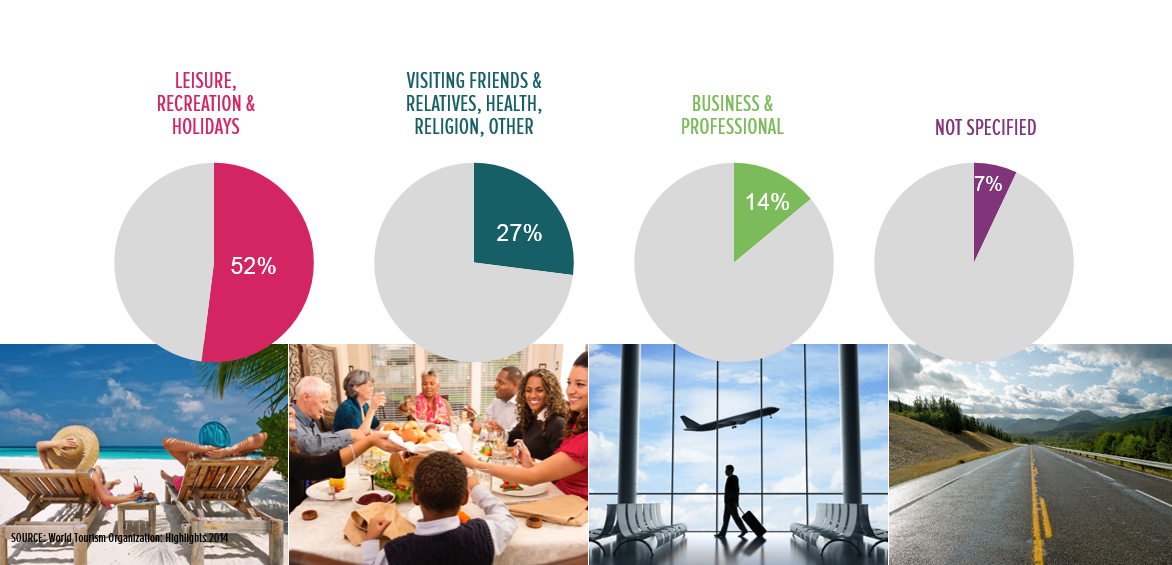The date of January 19 has officially been termed the most miserable day of the year. Whether or not this is accurate, the dire weather and lack of finances following Christmas certainly adds to the feeling of gloom. This date has been termed ‘Blue Monday’ – a day when consumers search for solutions to the ‘January blues’. Travel companies often refer to it as ‘H-Day’ (Holiday), as it is the most popular day to book a vacation.
A recent survey by Expedia found that around 8 in 10 people (81%) claim booking a trip is the best way to generate long-term satisfaction and excitement in January, and for 45% of Europeans booking via a website is their preferred method. As a result, the battle for brands to be noticed online has intensified. The solution, however lies in a programmatic approach, which cuts through the competition using data and human insight to ensure brand ads are placed in front of the right consumer in the right contextual environment.
Who’s on the move?
For travel brands, the advertising message should be as dynamic as their customer base. Programmatic and creative combine to offer personalised dynamic messages that are individually crafted to customers’ needs. Using advanced algorithms, programmatic understands where consumers are geographically and can predict their stage in the booking process, serving them most relevant advertising message.
Programmatic is also ideal for acquiring new customers or re-engaging existing ones. Destination based targeting can be used to gather the interests of consumers who have interacted with brands, previously enabling re-engagement based around that particular interest.
Going mobile
During a typical daily routine, consumers interact with a variety of media – including display and video – at different times of the day and on different devices. When it comes to purchases, consumers tend to spend their weekends researching on mobile devices, with desktop sales peaking on Mondays and Tuesdays. But that trend is shifting – according to Skyscanner, more Brits are booking travel while on the move, reporting a 152% global rise in travel searches on mobile and tablet devices.
While following eyeballs may seem like a daunting task from a marketing perspective, programmatic does the hard work to ensure a brand is placed in front of potential customers at the right time. And utilising a multi-device approach, rather than siloed strategy, ensures the consumer’s imagination is captured whenever they’re searching online.
Sun, sea and social
From endless sunbathing snaps to selfies in the sea, travel is becoming increasingly social. Research by the European Travel Commission shows that up to 50% of consumers are influenced by travel content on social networks and 40% base their plans on other people’s recommendations. Up to 68% of travellers are undecided about their travel destination before researching online, so contextual targeting and site lists can ensure a brand is top of mind as consumers make their booking decision.
Social sync is also a tool that takes social content from brand ambassadors and streams it live onto a banner ad, ensuring a brand makes the most of a socially savvy audience.
Make your campaign fly with programmatic
A multi-platform approach using multiple demand side platforms (DSPs) is the most effective way a travel brand can achieve efficient broad market reach and insight.
Virgin Holidays initially took the approach of using four DSPs for their programmatic marketing. The programme demonstrated some insightful and dramatic variances in the price per impression – DSP one offered 50p per impression; DSP two, 75p; DSP three, 40p; and DSP four, 90p. Armed with this knowledge, the obvious platform was DSP three, but without a holistic view of the marketplace, this level granular detail is not possible.
As a result of using a multi-platform approach, Virgin Holidays found their core market was 35-44 years old (50/50 male/female ratio), interested in traveling to North America on a package holiday for more than 10 nights. In terms of acquiring new customers and insights, behavioural targeting can match key demographics, sending a relevant creative to peak their interest.
What does the future look like?
So what can we expect from the future of travel and programmatic? As our lives become more entwined with technology, so do the interaction points between a brand and their consumer. TV syncing already enables the first steps from online to offline with synchronised advertising, while interactive billboards, beacons, and wearable technology offer ways to connect with consumers as they travel. For the holistic marketer, the future looks bright for those taking a multi-platform approach to their online advertising.


